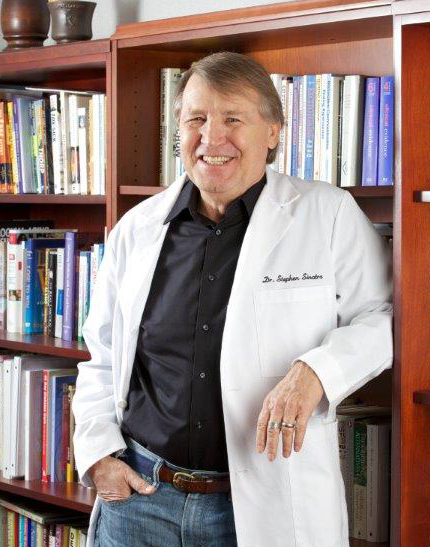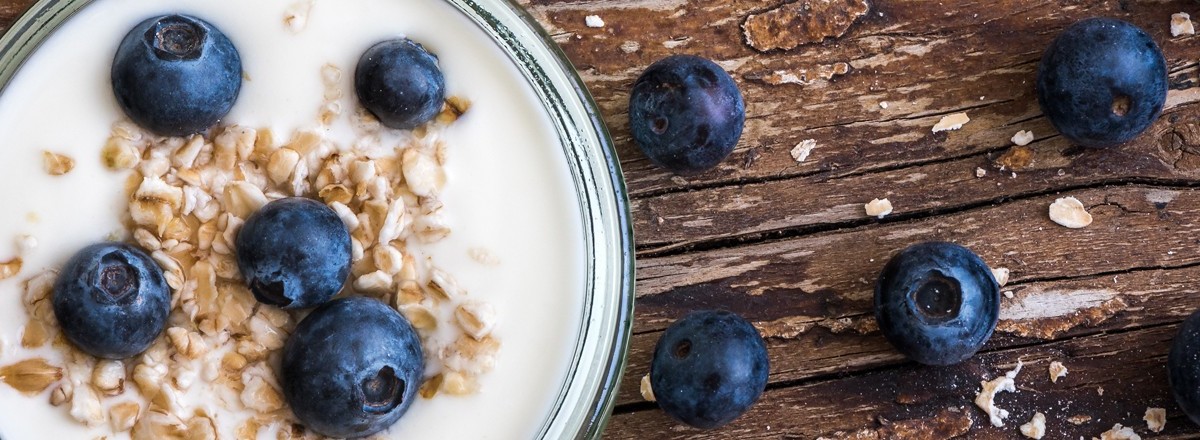By Stephen T. Sinatra, M.D., F.A.C.C., F.A.C.N., C.N.S., C.B.T.
Myth: The low-fat diet reduces your risk of heart disease because fat is bad for you, so eat no more than 25 to 35 percent of your food intake as fat, and keep saturated fat intake to less than 7 percent.
Fact: Recent research has shown that consuming even more healthy fat can lower heart disease risk, while high-glycemic carbohydrate intake is linked to the development of heart disease.
My Recommendation: Eat about 35 to 40 percent of your diet as healthy fats, mostly from nuts, avocados, olive oil, and fish. Stay away from foods advertised as “low-fat.” They are often high in calories from added sweeteners. You definitely don’t need those.
Don’t Be a Low-Fat Diet Dinosaur
For years, the American Heart Association (AHA) promoted a low-fat, high-carbohydrate diet for reducing the risk of cardiovascular disease. While the AHA has more recently raised its suggested fat intake limit to between 25 to 35 percent, it still recommends limiting saturated fat intake to less than 7 percent. For many, the legacy of the much-ballyhooed low-fat diet continues to live on, and is nothing less than a sure ticket for trouble, a dietary dinosaur created back in the 1970’s, when saturated fat was seen as a major cause of heart disease. We now know that cholesterol from saturated fat is not the real villain behind heart disease, sugar and trans-fats are.
Advertising and misinformation continue to flood the public from an entrenched low-fat food industry. Popular health magazines are full of articles with low-fat recommendations. So what do people do? Naturally, they flock to carbohydrates, and usually the wrong kinds, and low-fat products, most of which lead down a slippery slope to insulin resistance and diabetes. The low-fat diet invites excess consumption of refined carbohydrates, sugar and sweeteners, much of them found in processed food.
The myth lives on despite a steady stream of scientific studies over the years that debunk the low fat model for preventing heart disease. As an example, a 2006 study published in the Journal of the American Medical Association concluded that reduced total fat intake, over an eight year period, did not significantly reduce the risk of heart attacks or stroke among postmenopausal women.
The Sinatra Solution
Over the years I’ve seen many diets come and go in the name of health and wellness. Some have employed extreme approaches, eliminating one or more of the macro-nutrients (fat, carbohydrates, and proteins) we need, and others have emphasized general caloric restriction. While maintaining a healthy weight is certainly important for the prevention of cardiovascular disease, osteoporosis and some cancers, we also want to prevent excess inflammation in the body, which is thought to engender these and other degenerative diseases.
Lurking behind the labels of many so-called healthy low-fat foods are often sugar, high-fructose corn syrup, or some other unneeded sweetener. Yes, you get less fat but instead more sweets, calories, and an insulin response. A classic example is the organic fruit-flavored low-fat or no-fat yogurt. To the public that has been bombarded for years with the anti-fat message, that sounds like an attractive source of nourishment. It isn’t. It’s processed junk. I always reminded patients to opt for the plain yogurt, and be sure to read labels.
Many patients on a low-fat diet told are puzzled by the fact that they still gain weight. They are simply and unwittingly replacing sugar for fat, and the body responds by storing the excess calories as fat.
After much observation, study, and personal research, I find that best overall diet for health is one I refer to as the Pan-Asian Mediterranean, or “PAMM” diet.
This simple approach to food combines the high fiber, healthy fat Mediterranean diet, with the traditional diet followed by people living on the Asian side of the Pacific Rim. Although, these two diets may seem worlds apart, they are similar in their high intake of fish and vegetables and avoidance of inflammation-creating hydrogenated fats.
Before American fast food invaded many regions of the world, populations living in Mediterranean countries like Italy, Greece, and Spain, as well as parts of Asia, had a much lower incidence of heart disease than Northern Europe and the United States. While lifestyle and eating patterns may also be interdependent factors in this cardiac phenomenon, foods native to some Mediterranean and Asian cultures have been found to be anti-inflammatory in balance. If chronic inflammation underlies so many degenerative diseases, shouldn’t we begin with what we put in our mouths each day? When compared with the traditional American diet of burgers and fries, pizza, hot dogs, heaping plates of pasta served with bread, macaroni and cheese, etc., the traditional Mediterranean and Asian diets not only have less of what we don’t want (e.g., refined sugar and “bad fats”), they have more of what we do want (essential nutrients). The Mediterranean diet emphasizes fresh fruits and vegetables, legumes, local fish, home-produced oil, fresh garlic, seeds, and nuts. The typical Asian diet is bountiful in fish, fresh vegetables and fruits, locally-harvested seaweeds, and soy products. Solid, nourishing choices.
The balance of macro-nutrients is as follows:
- About 20 to 25 percent lean protein, from eggs, poultry, and beans
- About 35 to 40 percent healthy fats, from fish, nuts, avocados, and olive oil
- 40 to 45 percent low-glycemic carbohydrates (The glycemic index tells you how fast carbohydrates are absorbed into the body and how they affect your blood sugar and insulin levels. Important information. http://www.glycemicindex.com/about.php)
This is the best diet you can eat, no if, and or buts.
When you eat healthy, high-quality proteins, especially organic proteins like wild fish, or bison or range-fed beef, for example, you are eating non-inflammatory foods. And healthy fats like those found in nuts, or omega-3’s and monounsaturated fats (such as olive oil), do not set off an insulin response. Healthy fats and proteins promote a lower insulin response, and therefore a lower risk for developing heart disease.
Q & A
Q. My triglycerides are high and my HDL cholesterol is low. I’m surprised by that because I don’t eat meat and follow a strict low-fat, high-carbohydrate diet.
A. If you carry your excess fat around your middle, have a low level of HDL and high triglycerides while consuming a low-fat, high-carbohydrate diet, you very likely have some degree of insulin resistance, which is widely considered to be a forerunner of diabetes. The main problem is that your diet is high in carbohydrates and that’s the source of your high triglycerides.
To lower your triglycerides and lose weight, do the following:
- Switch to my PAM diet. That will put you on track to lose five to eight pounds, and enough to make a difference in your triglyceride status.
- Eat fewer high-glycemic carbohydrates like rice, pastas, potatoes, corn, carrots and peas. Avoid bread, crackers, cookies, cakes, and bagels.
- Increase your exercise. Walk 1-2 miles daily.
A high triglyceride level is more dangerous for women than for men. If you are a diabetic, overweight woman with high triglycerides, your risk of developing heart disease is 200 times greater than someone without these factors.
In The Great Cholesterol Myth, my co-author Jonny Bowden tells this story, which matches my own clinical observations:
“Before I became a nutritionist and ultimately an author, I was a personal trainer. I worked at Equinox Fitness Clubs in New York City, and the vast majority of my clients were there for one thing: to lose weight. It was 1990. Fat was considered dietary enemy number one, and saturated fat was considered especially bad because we all “knew” it clogged your arteries, raised your cholesterol, and led to heart disease. So, like most trainers, I put my clients on low-fat diets and encouraged them to do a ton of aerobics plus a little bit of weight training.
“Which worked. Sometimes. More often than not, the strategy bombed.
“Take Al, for example. Al was an incredibly successful, powerful businessman in his early sixties with a huge belly he just couldn’t get rid of. He was eating a very low-fat diet, doing a ton of aerobics on the treadmill in his house, and yet his weight was hardly budging. If everything I had been taught as a personal trainer was right, that shouldn’t have been happening.
“Meanwhile, my eyes were telling me something very different, and it wasn’t just because of what I had seen happen with Al. It was happening with other clients as well. Sick of not getting results on low-fat, high-carb diets, they threw caution to the wind…and embraced…protein- and fat-friendly diets. They were eating more fat − even more saturated fat − but nothing bad was happening at all, unless, of course, you count feeling better and getting slimmer as nothing.”
Reference:
- Howard BV, et al. Low-fat dietary pattern and risk of cardiovascular disease. The Women’s Health Initiative randomized controlled dietary modification trial. JAMA. 2006;295(6):655-666
- Lichtenstein AH, et al. Diet and Lifestyle Recommendations Revision 2006: A Scientific Statement From the American Heart Association Nutrition Committee. Circulation. 2006;114:82-9.
© 2014 HeartMD Institute. All rights reserved.











